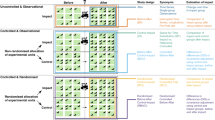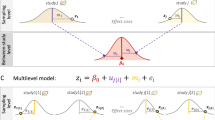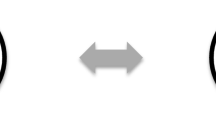Abstract
‘Monitoring’ has become an omnibus term and is sometimes applied, almost indiscriminately, to a range of disparate activities. Amongst these one may include, for example, attempts at describing prevailing environmental conditions; the occurrence, distribution and intensity of pollution; the status of ecological communities or populations of species; or simply providing a watching brief on the countryside at large.
Access this chapter
Tax calculation will be finalised at checkout
Purchases are for personal use only
Preview
Unable to display preview. Download preview PDF.
Similar content being viewed by others
References
Craig, J.F. (1980) Growth and production of the 1955–1972 cohorts of perch, Perca fluviatilis L. in Windermere. Journal of Animal Ecology 49, 291–315.
Elton, C. (1942) Voles, mice and lemmings: problems in population dynamics. Oxford University Press, London.
Hellawell, J.M. (1977) Change in natural and managed ecosystems: detection, measurement and assessment. Proceedings of the Royal Society. London B: 197, 31–57.
Hellawell, J.M. (1978) Biological surveillance of rivers. Medmenham and Stevenage: Water Research Centre.
Hellawell, J.M. (1986) Biological indicators of freshwater pollution and environmental management. Elsevier Applied Science Publisher, London.
Lack, D.L. (1966) Population studies of birds. Clarendon Press, Oxford.
MacLulich, D.A. (1937) Fluctuations in the numbers of the varying hare (Lepus americanus). University of Toronto Studies, Biological Series No. 43.
NCC (1989) Guidelines for selection of biological SSSIs. Nature Conservancy Council, Peterborough.
Odum, E.P. (1969) The strategy of ecosystem development. Science, 164, 262–270.
Wynne-Edwards, V.C. (1965) Self-regulating systems in populations of animals. Science, 147, 1543–1548.
Editor information
Editors and Affiliations
Rights and permissions
Copyright information
© 1991 Springer Science+Business Media Dordrecht
About this chapter
Cite this chapter
Hellawell, J.M. (1991). Development of a rationale for monitoring. In: Goldsmith, B. (eds) Monitoring for Conservation and Ecology. Conservation Biology, vol 3. Springer, Dordrecht. https://doi.org/10.1007/978-94-011-3086-8_1
Download citation
DOI: https://doi.org/10.1007/978-94-011-3086-8_1
Publisher Name: Springer, Dordrecht
Print ISBN: 978-0-412-35600-1
Online ISBN: 978-94-011-3086-8
eBook Packages: Springer Book Archive




